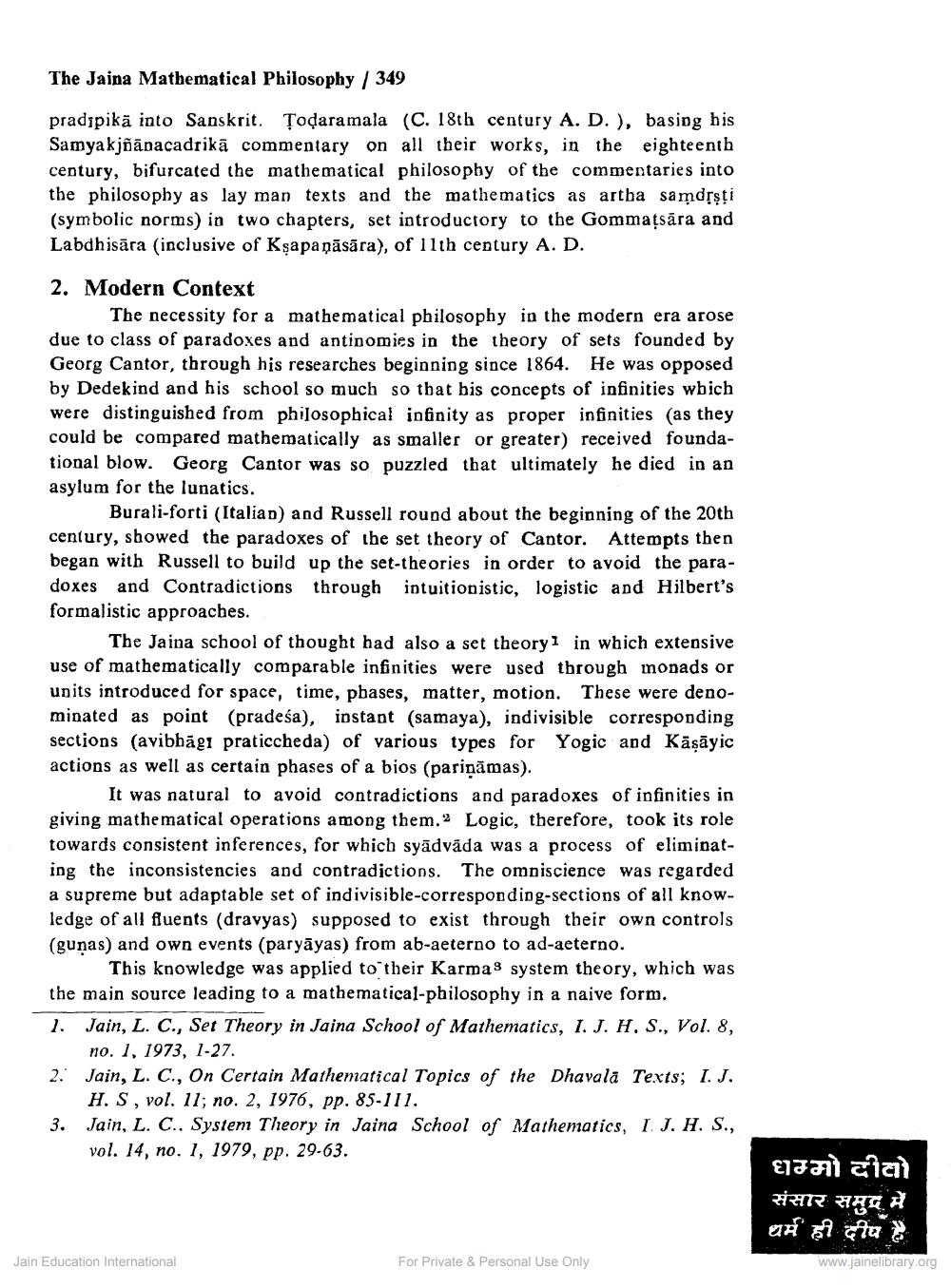________________
The Jaina Mathematical Philosophy / 349
pradspikā into Sanskrit. Țodaramala (C. 18th century A. D. ), basing bis Samya kjõāpacadrikā commentary on all their works, in the eighteenth century, bifurcated the mathematical philosophy of the commentaries into the philosophy as lay man texts and the mathematics as artha samdşşți (symbolic norms) in two chapters, set introductory to the Gommațsāra and Labdhisāra (inclusive of Kșapaņāsāra), of 17th century A. D.
2. Modern Context
The necessity for a mathematical philosophy in the modern era arose due to class of paradoxes and antinomies in the theory of sets founded by Georg Cantor, through his researches beginning since 1864. He was opposed by Dedekind and his school so much so that bis concepts of infinities wbich were distinguished from philosophical infinity as proper infinities (as they could be compared mathematically as smaller or greater) received foundational blow. Georg Cantor was so puzzled that ultimately he died in an asylum for the lunatics.
Burali-forti (Italian) and Russell round about the beginning of the 20th century, showed the paradoxes of the set theory of Cantor. Attempts then began with Russell to build up the set-theories in order to avoid the paradoxes and Contradictions through intuitionistic, logistic and Hilbert's formalistic approaches.
The Jaina school of thought had also a set theory1 in which extensive use of mathematically comparable infinities were used through monads or units introduced for space, time, phases, matter, motion. These were denominated as point (pradeśa), instant (samaya), indivisible corresponding sections (avibhāgi praticcheda) of various types for Yogic and Kāşāyic actions as well as certain phases of a bios (pariņāmas).
It was natural to avoid contradictions and paradoxes of infinities in giving mathematical operations among them.2 Logic, therefore, took its role towards consistent inferences, for which syādvāda was a process of eliminating the inconsistencies and contradictions. The omniscience was regarded a supreme but adaptable set of indivisible-corresponding-sections of all knowledge of all fluents (dravyas) supposed to exist through their own controls (gunas) and own events (paryāyas) from ab-aeterno to ad-aeterno.
This knowledge was applied to their Karmas system theory, which was the main source leading to a mathematical-philosophy in a naive form. 1. Jain, L. C., Set Theory in Jaina School of Mathematics, 1. J. H. S., Vol. 8,
no. 1, 1973, 1-27. 2: Jain, L. C., On Certain Mathematical Topics of the Dhavala Texts; I. J.
H. S, vol. 11; no. 2, 1976, pp. 85-111. 3. Jain, L. C.. System Theory in Jaina School of Mathematics, I. J. H. S.,
vol. 14, no. 1, 1979, pp. 29-63.
EJH dia संसार समुद्र में धर्म ही दीय है
2
Jain Education International
For Private & Personal Use Only
www.jainelibrary.org




